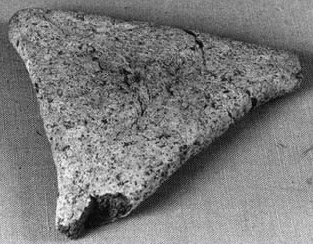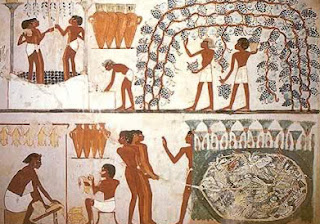The most important historic mosque in Alexandria, Egypt, as well as a very beautiful one, is considered to be that of Abu El Abbas El Mursi. Constructed in 1775 by Algerians, it was built over the tomb of the thirteenth century Murcia Andalusan saint, Ahmed Abu al-Abbas al-Mursi (Abu'l 'Abbas) who joined and then lead, as a devout Sufi, the Shadhali brotherhood. Abu El Abbas El Mursi is in himself a very interesting story.
His entire name was Sheikh Shehab El Din Abu El Abbas Ahmed Ibn Umar Ibn Mohamed Al Ansary El Mursi. He was born in Andalusia (an autonomous district of Spain, the capital of which is Seville) in 616 H (1219 AD) to a wealthy family in the trading business. He was therefore well educated, having been instructed in the Quran, Sunna and Shehab, and he grew up helping his father in the trading business. He was also known for his honesty and for his many contributions to the needy.
He left Spain with his family in 640 H (1242 AD) in the face of increasing Christian control over Spain. He was accompanied by his father, brother, and his mother. However, his parents did not make it to Tunisia, their destination. In Tunisia, Shehab heard about El Sheikh Abu El Hassan El Shazly and he accompanied him in his journey to Alexandria. Many Muslim scholars and religious people chose to live in Alexandria after the Christian began to dominate Spain.
El Sheikh El Shazly was fond of Shehab and in return Abu al-Abbas became one of his best students. Abu al-Abbas married El Shazly’s daughter and had two daughters and a son from her. Shehab Abu El Abbas El Mursi lived 43 years in Alexandria as a Muslim teacher until he died in 686 H (1286 AD).
The site of the modern mosque has a long history. At first, it was only the tomb of Abu El Abbas El Mursi, which remains today on its original site. The tomb was placed in a small building near the eastern harbor of Alexandria.
The site of the modern mosque has a long history. At first, it was only the tomb of Abu El Abbas El Mursi, which remains today on its original site. The tomb was placed in a small building near the eastern harbor of Alexandria.
In the year 1307 AD, El Sheikh Zein El Din Ibn El Qattan, one of the richest traders of Alexandria, visited the tomb. Reverent of the Muslim scholar, he ordered his men to build a mausoleum and a dome for the tomb. He also built a fine mosque with a small square minaret. He even funded an Iman for the small mosque. The tomb was placed under the dome to the right hand side of the entrance. The mosque became a place of pilgrimage for many Muslims from Egypt and Morocco who passes through Alexandria during their Hej journey to and from Mecca.
However, by 1477, the mosque was neglected and in bad need of repair. Therefore, when Gaqmas El Zahry, the ruler of Alexandria, visited it, he ordered that the mosque be renovated. At the same time, he built himself a tomb alongside that of Abu al-Abbas, where he also was buried after his death. Once again in 1596 AD, the mosque was renewed after a visit by Sheikh Abu al Abbas El Khurzemy, who also built himself a tomb in the complex. However, though the original structure does incorporate older elements, it was Sheikh Abu el Hassan El Maghreby who, after visiting the small mosque in 1775, ordered the building of the current one on this site.However, by 1477, the mosque was neglected and in bad need of repair. Therefore, when Gaqmas El Zahry, the ruler of Alexandria, visited it, he ordered that the mosque be renovated. At the same time, he built himself a tomb alongside that of Abu al-Abbas, where he also was buried after his death. Once again in 1596 AD, the mosque was renewed after a visit by Sheikh Abu al Abbas El Khurzemy, who also built himself a tomb in the complex. However, though the original structure does incorporate older elements, it was Sheikh Abu el Hassan El Maghreby who, after visiting the small mosque in 1775, ordered the building of the current one on this site.
Nevertheless, by 1863, the current mosque was in a bad state once more, unfit for holding prayer services. Therefore, Ahmed El Kakhakhny, one of Alexandria's most famous builders, renewed the current mosque and afterwards, a number of the houses that were built up around the mosque were removed to make more space. Afterwards, Ali Mubarak, and educational leader in Egypt, described it as, "wide, strong, and fine looking and the practice of Islam is being done there in its best manner." By now, the mosque was operated under the Awqaf (Waqf), a governmental endowment for Islamic affairs, which provided Imans as well as caretakers. A mulid, or Islamic religious festival was also established to celebrate the birth of Abu El Abbas, which lasted eight days every year.
King Farouk, whose aim it was to build Cairo into the Paris on the Nile, also sought to make Alexandria the Jewel of the Mediterranean. There, he built a wide square known as "Midan el Masaged", or the "Square of Mosque" covering some 43,200 square meters. The Mosque of Abu el Abbas el Mursi was the focal point and center of this square, and it is surrounded by five other mosques, among which is that of al-Busiri and Yaqut al- 'Arshi. As part of this building program, the mosque was once again rebuilt by the government in the beautiful Arabian style that was popular during the Ayyubid Period, the time when Abu El Abbas El Mursi first came to Alexandria from Spain. They also paid special attention to the mausoleum of the saint during these renovations, leaving it in its original position.
This was a major rebuilding of the mosque. The walls of the mosque stand 23 meters high and dressed in artificial stone, while the minaret, situated on the southern side, rises to 73 meters. It has an Ayoubids design, with four sections. The first section is about 15 meters high and square in shape. The second one is four meters high with eight sides. The third level is about 15 high with sixteen sides, while the uppermost level is 3.25 meters high with a circular shape. The top of the minaret is covered with brass and and has an Islamic moon finale.
The mosque has two main entrances. The one on the north overlooks the square and faces the street leading to the Royal Palace of Ras at-tin. The eastern door also overlooks the square. The stairs of the entrances are made of Egyptian granite.
The main part of the mosque, internally, is an octagon, with sides measuring 22 meters. The internal walls are also dressed in artificial stone, though there is a mosaic dada 5.60 meters high. The entire area of the mosque is 3000 square meters. The ceiling, supported by sixteen columns made of Italian granite which in turn support arches, soars 17.20 overhead. The ceilings are decorated with arabesque.
The columns are solid, or monolithic, including their capital and base. They are octagonal in shape, measuring .85 meters in diameter and 8.60 meters in height. In the center of the ceiling is an elevated skylight with eight sides, known as a Shokhsheikha, that is 24 meters above floor level and 51 meters side. Each side of the skylight actually has three windows of colored glass in arabesque designs, set into aluminum frames. This skylight is surrounded by four domes, placed over the four mausoleums within the complex. The domes have an inner and outer layer. The inner one forming the ceiling stand 22 meters high, and are 5 meters in diameter. The upper domes measure 7.5 meters in diameter and stand 11 meters above the lower domes. The floors are paved in white marble.
The doors, minbar and windows are made of joined and finely carved teak, citronia and walnut. The minbar is 6.35 meters high, capped by a dome, and has verses of Quran written at the top in French gold. The mihrab of the mosque, located in the Qibla wall, stands at the base of the mosque's minaret. It is flanked by two columns of Egyptian granite measuring three meters in height. At the end of each column, the name of Mohamed is written in the Kufic style of Arabic writing. The main rule in Islam, ”There is no god except Allah and Mohamed is the prophet of Allah,” is written twice, also flanking the mihrab.
The mayda, an absolution area, along with the lavatories, are arranged on the western side of the mosque with their own entrance that overlooks the square.
According to a Royal desire, the necessary alterations were made to reserve special quarters for women, with a private entrance, in order that they can perform their religious rites. The Ministry of Waqfs completed the construction of the mosque at the beginning of 1943 at a total cost of about 140,000 LE. It would seem that this amount of funds paid for a very exquisitely beautiful monument that stands as a lasting memory to Alexandria's most beloved Muslim saint.



































